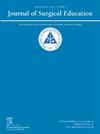美国整形外科住院医师的种族和民族多样性。
IF 2.6
3区 医学
Q1 EDUCATION, SCIENTIFIC DISCIPLINES
引用次数: 0
摘要
导言:过去几十年的重大努力导致该领域的种族多样性日益增加,导致更多代表性不足的少数民族(URM)参加培训。为了突出提高URM包容性和培训的领域,我们试图找出URM与白人和亚裔学员相比在教育和成就方面的差距。方法:在这项横断面研究中,对公开可访问的记录进行评估,以获取学员的教育、研究、地点和种族数据,并将urm(黑人、西班牙裔、夏威夷人、美洲原住民)与白人和亚洲学员进行比较。结果:在95个项目(950个综合项目和142个独立项目)的1092名学员中,白人和亚洲人占94.2%,而urm(黑人、西班牙裔和其他)占5.8%。与美国医学院学生相比,白人学生增加21.4%,亚洲学生增加1.2%,黑人和西班牙裔学生分别减少3.9%和4.3%。相当比例的学生毕业于医学院附属的住院医师项目,在他们的学校匹配,或者选择其他途径。urm均为对抗疗法毕业生,具有更高的学位,具有更多的mba学位(p=0.024)。在独立项目中接受培训的urm比例较高(p=0.003),分布在南部和中西部项目中(p=0.021)。urm的引用较少(p=0.047),尽管出版物和赫希指数具有可比性。结论:我们的分析发现了一个可补救的问题,为改善种族代表性提供了途径。通过有效指导urm的比赛策略,早期的赛前指导仍然是使该领域多样化的关键干预措施。这一点可以从URM受训者较少的引用中得到证明,尽管他们的研究背景相似,但获得高级学位(尤其是mba)的比例更高。本文章由计算机程序翻译,如有差异,请以英文原文为准。
Racial and Ethnic Diversity in American Plastic Surgery Residency
Introduction
Significant efforts during the past decades have led to growing racial diversity in the field, resulting in more underrepresented minorities (URM) in training. To highlight areas for improving URM inclusion and training, we sought to pinpoint educational and achievement gaps among URMs in contrast to White and Asian trainees.
Methods
In this cross-sectional study, publicly accessible records were assessed for data on trainees' education, research, location, and race, comparing URMs (Black, Hispanic, Hawaiian, Native American) to White and Asian trainees.
Results
Among 1092 trainees across 95 programs (950 integrated and 142 independent), Whites and Asians comprised 94.2%, while URMs (Blacks, Hispanics, and Others) made up 5.8%. Compared to U.S. medical students, there was a 21.4% increase in Whites and 1.2% in Asians, with a 3.9% and 4.3% decrease in Blacks and Hispanics, respectively. Comparable proportions graduated from medical schools with affiliated residency programs, matched at their schools, or pursued alternative pathways. URMs were all allopathic graduates, had more advanced degrees, with significantly more MBAs (p=0.024). A higher proportion of URMs trained in independent programs (p=0.003) and were distributed towards Southern and Midwestern programs (p=0.021). URMs had fewer citations (p=0.047), though publications and Hirsch index were comparable.
Conclusions
Our analysis identifies a remediable issue, offering avenues for improved racial representation. Early pre-match mentorship remains the key intervention to diversify the field by effectively guiding match strategies for URMs. This is evidenced by fewer citations among URM trainees albeit comparable research backgrounds higher prevenance of advanced degrees, particularly MBAs.
求助全文
通过发布文献求助,成功后即可免费获取论文全文。
去求助
来源期刊

Journal of Surgical Education
EDUCATION, SCIENTIFIC DISCIPLINES-SURGERY
CiteScore
5.60
自引率
10.30%
发文量
261
审稿时长
48 days
期刊介绍:
The Journal of Surgical Education (JSE) is dedicated to advancing the field of surgical education through original research. The journal publishes research articles in all surgical disciplines on topics relative to the education of surgical students, residents, and fellows, as well as practicing surgeons. Our readers look to JSE for timely, innovative research findings from the international surgical education community. As the official journal of the Association of Program Directors in Surgery (APDS), JSE publishes the proceedings of the annual APDS meeting held during Surgery Education Week.
 求助内容:
求助内容: 应助结果提醒方式:
应助结果提醒方式:


